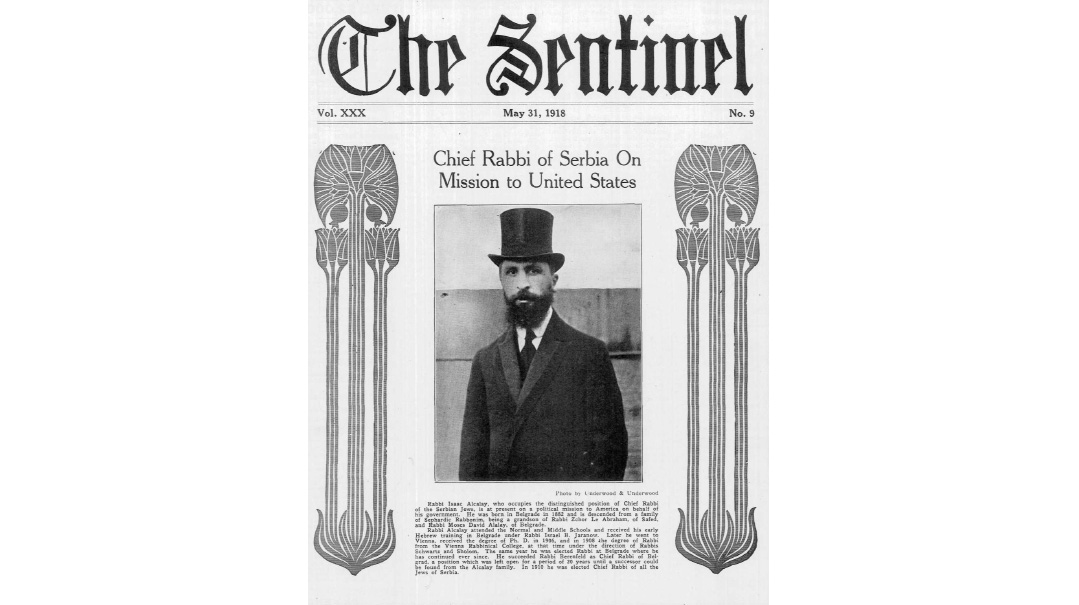The Torah Sheleimah Road Trip
| July 12, 2022All this paled in comparison to Rav Kasher's magnum opus — the multivolume Torah Sheleimah

Title: The Torah Sheleimah Road Trip
Location: United States
Document: Various newspaper articles
Time: 1930s
Rav Menachem Mendel Kasher was born in Warsaw in 1895 to a family of Gerrer chassidim. His maternal grandfather, Reb Shlomo Pacholder, was a devoted follower of the Avnei Nezer — Rav Avrohom Borensztain of Sochatchov — and would take a young Menachem Mendel along when he went to visit his rebbe. In his mature years, Rav Kasher recalled with deep satisfaction that he had been privileged to receive the personal blessing of the Sochatchover. Rav Kasher considered himself somewhat of a student of the Sochatchover and of the Rogatchover Gaon, Rav Yosef Rozen. Both embodied novel approaches to Torah study — and Rav Kasher built upon those with his own method and vast knowledge.
In 1920 the nascent Agudath Israel invited Rav Kasher to become the editor of its new publication, Degel HaTorah. Renowned Torah luminaries contributed to the Warsaw-based journal, including the Rogatchover, Rav Meir Simcha HaKohein of Dvinsk, Rav Elchonon Wasserman, the Chofetz Chaim, Rav Meir Don Plotzki (author of Kli Chemdah), Rav Menachem Ziemba, and scores of others. Never before (and perhaps never again) were such giants featured in one publication, which sparked a revival of Torah discourse so greatly needed in the wake of World War I’s destruction.
During the early 1920s, Rav Kasher took an activist role in local Torah life as a co-founder of the famous Mesivta of Warsaw and as a secretary for the Moetzes Gedolei HaTorah of Agudas Yisrael of Poland. In 1924, the Imrei Emes of Gur requested that Rav Kasher relocate to Yerushalayim to establish the first Gerrer yeshivah in the Land of Israel, named Yeshivas Sfas Emes. He served as rosh yeshivah for its first two years.
These early years of public activism were followed by nearly six decades of pursuing his lifelong passion of writing, editing, and publishing his many seforim. His prodigious literary output included 25 volumes of the Torah journal Noam, biographical works, halachic responsa, a treatise on the International Dateline, the halachic ramifications of man reaching the moon, Hatekufah Hagedolah exploring his relationship with Zionism and the State of Israel, and many more works too numerous to mention. He also edited and published the works of the Rogatchover Gaon.
All this paled in comparison to his magnum opus — the multivolume project entitled Torah Sheleimah. This bold initiative was an encyclopedic work that went through the parshiyos of the Torah, weaving in all relevant passages from Chazal, across Shas and the Midrash. He even included previously unknown midrashim that he had found in manuscripts. He then added comments clarifying the text, and utilizing his vast knowledge that ran the gamut of Torah literature, he provided additional commentary and clarifications. He spent most of his life seeing this to fruition, managing to publish 38 volumes in his lifetime, with several published posthumously.
After the first volume in the series was released, he traveled to the United States in 1929 to fundraise for the continued publication of the remaining volumes. He eventually settled there for quite some time before returning to Eretz Yisrael. He passed away in Jerusalem on 27 Cheshvan 1983.
Rebbe Rescue
World War II’s outbreak found Rav Kasher in the United States, and word soon got out that his rebbe, the Imrei Emes, Rav Avraham Mordechai Alter of Gur, was in mortal danger. Though the Nazis had not yet embarked on the Final Solution, they personally sought out the Imrei Emes. As they searched for the “Wunder Rabbiner,” Rav Kasher set aside the publication of Torah Sheleimah to focus on the rescue mission. Surprisingly, Rav Kasher was able to secure the assistance of retired Supreme Court justice Louis Brandeis, and this Polish-Palestinian immigrant rabbi soon had a meeting with Secretary of State Cordell Hull. The lobbying efforts ultimately paid off, and the Gerrer Rebbe and several family members were able to escape via Italy to Eretz Yisrael in the spring of 1940.
Plagiarizing
As Torah Sheleimah became an integral source for authors, many made use of its contents without acknowledging where they obtained it from. Rav Kasher stood by silently, proud that his work was being utilized as he’d hoped. In one instance, however, the infringement went too far. A Lodz businessman who was somewhat of a Torah scholar appropriated the first two volumes of Torah Sheleimah and released them under a different title, even obtaining haskamos from notable rabbis for his “novel work.” Eventually, the sefer was exposed as complete plagiarism, and those who had written haskamos sent sincere letters of apology to Rav Kasher.
(Originally featured in Mishpacha, Issue 919)
Oops! We could not locate your form.







